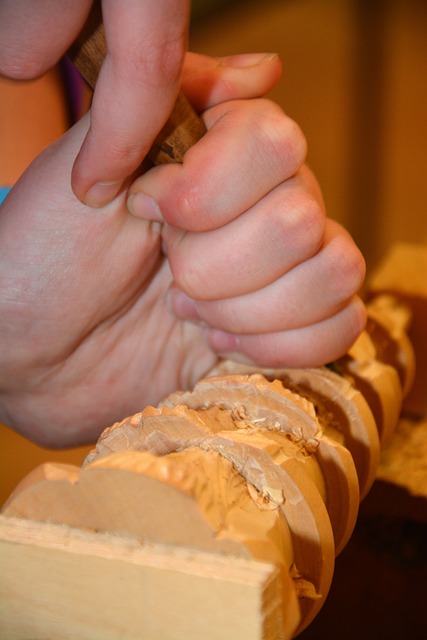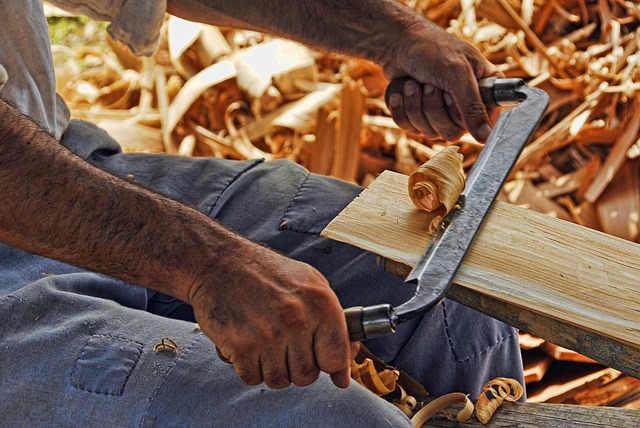A carpenter's foundational skill lies in precise measurement and marking, which are indispensable for accurate woodworking projects. Essential tools range from basic ones like tape measures and rulers to advanced laser distance measurers. Techniques for transferring measurements onto workpieces rely on instruments such as rulers and carpenter's squares for straight-line markings. Precision in marking is vital for successful sawing, transforming raw lumber into components that fit together flawlessly. Carpenters also use tools to transfer angles and check for squareness, including combination squares, speed squares, and tri-squares. Mastery of these initial steps ensures the quality and fit of the final product, necessitating patience and meticulousness throughout the process.
Carpenters must excel in various cutting methods, including hand sawing, circular sawing, and power mitering, requiring knowledge of tools and materials. The correct blade and sharp saws are critical for clean cuts. Embracing new technologies like laser cutters and CAD systems is important for precision in complex or large projects. Yet, the core skills of manual cutting remain essential due to their versatility and ability to work under diverse conditions. A commitment to continuous learning and adaptability is crucial for carpentlers who aim to stay at the forefront of their field.
For wood piece joining, carpenters choose joints based on project needs, from simple butt joints to more intricate tongue-and-groove or dovetail joints. Each joint is test-assembled for alignment before gluing. Strength and longevity are achieved through the use of adhesives combined with mechanical fasteners, with the selection depending on the project's requirements. Pre-drilling pilot holes prevents splitting and ensures secure fastener placement. Sanding during assembly stages is critical for finishing, enhancing both the work's aesthetic appeal and structural integrity.
Embark on a journey through the meticulous world of carpentry, where precision paves the path to perfection. This comprehensive guide delves into the essential techniques every carpenter must master—from the initial measure to the final join. Uncover the secrets behind making precise cuts and assembling wood pieces with ease and accuracy. Whether you’re a novice or an experienced artisan, these methods will enhance your craftsmanship and elevate your projects. Join us as we explore ‘The Art of Precision: A Carpenter’s Guide to Measuring and Marking for Accurate Cuts,’ ‘Mastering the Craft: Efficient Cutting Techniques Every Carpenter Should Know,’ and ‘Assembly Excellence: Best Practices for Joining Wood Pieces with Ease and Precision.’
- The Art of Precision: A Carpenter's Guide to Measuring and Marking for Accurate Cuts
- Mastering the Craft: Efficient Cutting Techniques Every Carpenter Should Know
- Assembly Excellence: Best Practices for Joining Wood Pieces with Ease and Precision
The Art of Precision: A Carpenter's Guide to Measuring and Marking for Accurate Cuts
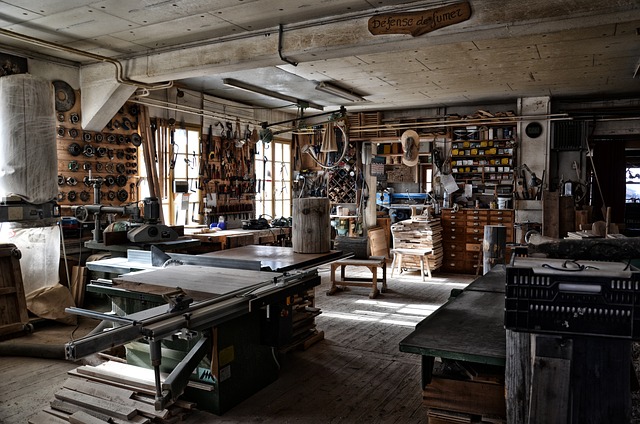
A carpenter’s precision is a testament to the mastery of foundational skills in measuring and marking. The art of making accurate cuts begins with selecting the right tools for the task at hand. Carpenters rely on a variety of measurement instruments, from tape measures and rulers to laser distance measurers, which provide the necessary exactness for every project. When the measurements are taken, the next step is to accurately mark these points on the wood. This is achieved through techniques that include scribing along the edge of a ruler or using a carpenter’s square to ensure straight lines. The marks serve as guides for sawing, which is a critical process in shaping lumber into functional parts. To ensure the utmost accuracy, carpenters often employ combination squares, speed squares, and tri-square tools to transfer angles and check for squareness. The precision of these initial steps is paramount; they lay the groundwork for assembling pieces that fit together seamlessly. Carpenters must exercise patience and attention to detail during this phase, as a mere millimeter of imprecision can lead to misalignment or parts that do not join correctly. Mastering the art of measuring and marking is an essential skill for any carpenter, one that requires practice and adherence to established methods, ensuring every cut contributes to the integrity and beauty of the final piece.
Mastering the Craft: Efficient Cutting Techniques Every Carpenter Should Know
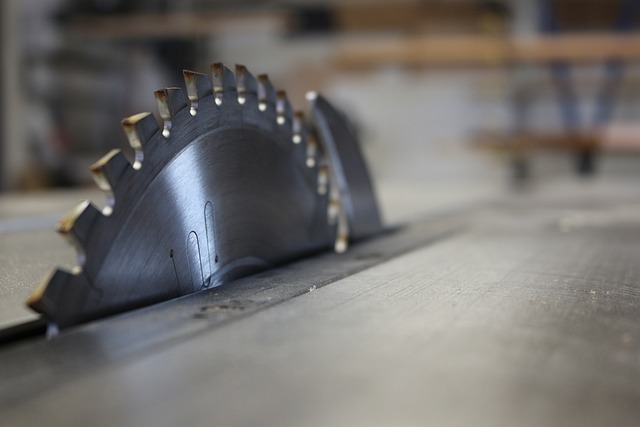
A skilled carpenter is the cornerstone of any successful construction or woodworking project, and mastering efficient cutting techniques is paramount to their craft. The precision and speed at which a carpenter can execute cuts directly impact productivity and the quality of the final product. To excel in this field, it is essential for carpenters to be adept at various cutting methods, including hand sawing, circular sawing, and power mitering. Each technique requires a different approach and understanding of the tools involved, from selecting the appropriate blade for different materials to maintaining the sharpness of saws to ensure clean cuts. Moreover, carpenters must familiarize themselves with measurement accuracy to avoid costly mistakes. Utilizing tools like tape measures, squares, and rulers effectively complements these cutting skills, ensuring that each piece fits perfectly into place during the assembly process. By honing their abilities in these areas, carpenters can significantly enhance their workflow and produce projects that stand up to rigorous standards of excellence.
Advancements in technology have also introduced new cutting methods, such as laser cutters and computer-aided design (CAD) systems, which carpenters must learn to integrate into their skill set. These technologies allow for high precision and repeatability, making them valuable for intricate or large-scale projects. However, the fundamentals of manual cutting remain crucial, as they ensure versatility and the ability to work effectively even under challenging conditions. A carpenter who masters both traditional and modern cutting techniques will be well-equipped to face the diverse demands of their profession, from crafting custom furniture to constructing multi-story buildings. Continuous learning and adaptation to new tools and methods are key to staying at the forefront of the carpentry field.
Assembly Excellence: Best Practices for Joining Wood Pieces with Ease and Precision
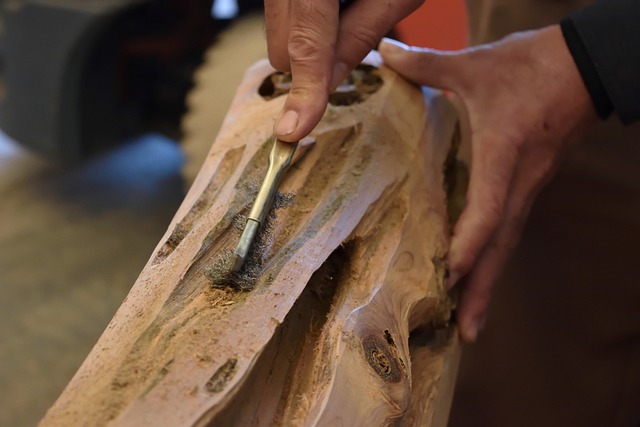
When joining wood pieces, carpenters employ a suite of best practices that ensure assembly excellence with ease and precision. A meticulous selection of joint types based on the project’s requirements is paramount. For instance, butt joints are ideal for small projects where alignment is less critical, while tongue-and-groove or dovetail joints are preferred for larger pieces or where a tight fit is essential. The precision of cut edges is crucial; carpenters rely on high-quality saws and cutting tools to achieve clean, accurate cuts. The fit of the joint should be test-assembled before gluing to ensure all components align perfectly.
The use of adhesives in conjunction with mechanical fasteners enhances the strength and durability of the joinery. A carpenter might opt for PVA wood glue for its strong bond and ability to fill minor gaps, or they may use a polyurethane glue for waterproof joints. Fasteners, such as screws, dowels, or biscuits, should be selected based on the wood type and joint design; pre-drilling pilot holes prevents splitting and ensures the fasteners are securely held. Sanding between assembly stages is a step often overlooked but highly beneficial for achieving a seamless finish. It removes any imperfections from cutting or joining and allows for a more refined, flush fit that is both aesthetically pleasing and structurally sound.
In conclusion, the proficiency of a carpenter is exemplified not only in the mastery of individual techniques but also in the seamless integration of these skills during the cutting and assembly processes. The nuanced art of precision measured and marked out with care leads to efficient cutting techniques that are the bedrock of any quality woodworking project. Similarly, joining wood pieces with ease and precision, as outlined in Assembly Excellence, is a testament to a carpenter’s dedication to their craft. By adhering to the guidelines provided in ‘The Art of Precision: A Carpenter’s Guide to Measuring and Marking for Accurate Cuts’ and ‘Mastering the Craft: Efficient Cutting Techniques Every Carpenter Should Know,’ artisans can elevate their work from good to exceptional. These practices not only enhance the aesthetic appeal but also ensure structural integrity, making every project a reflection of the carpenter’s expertise.


